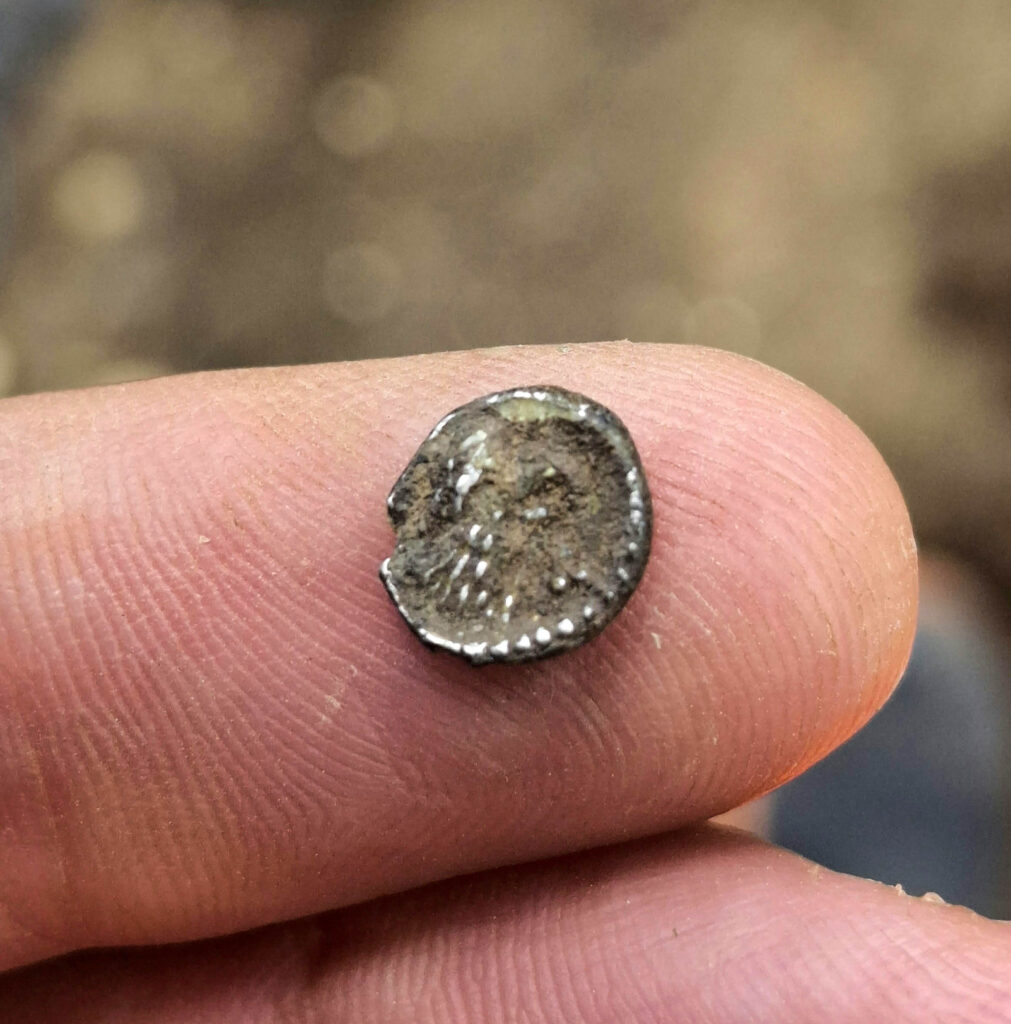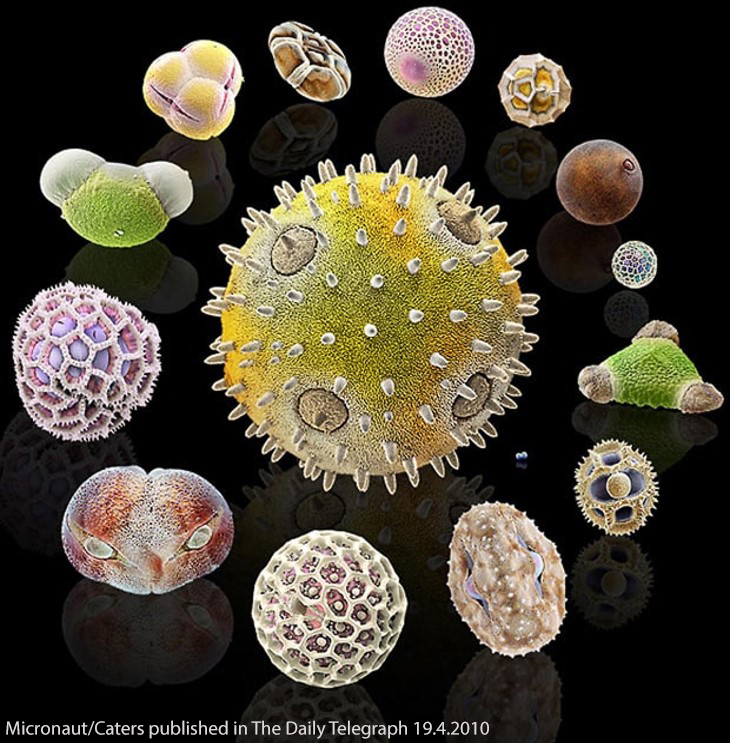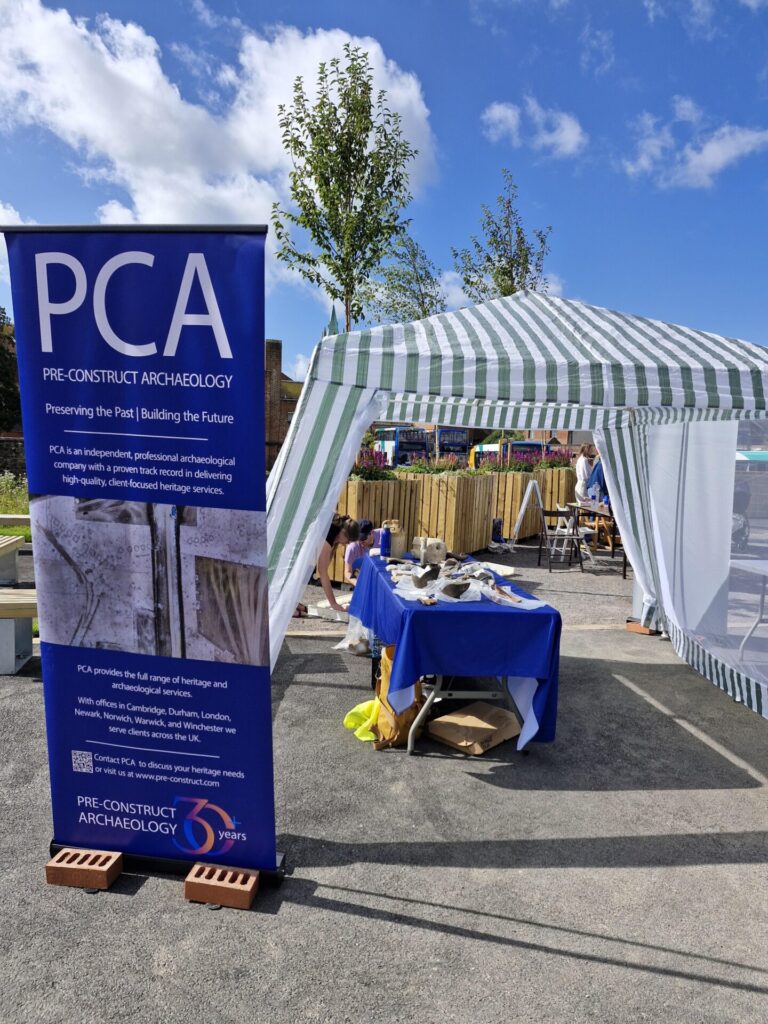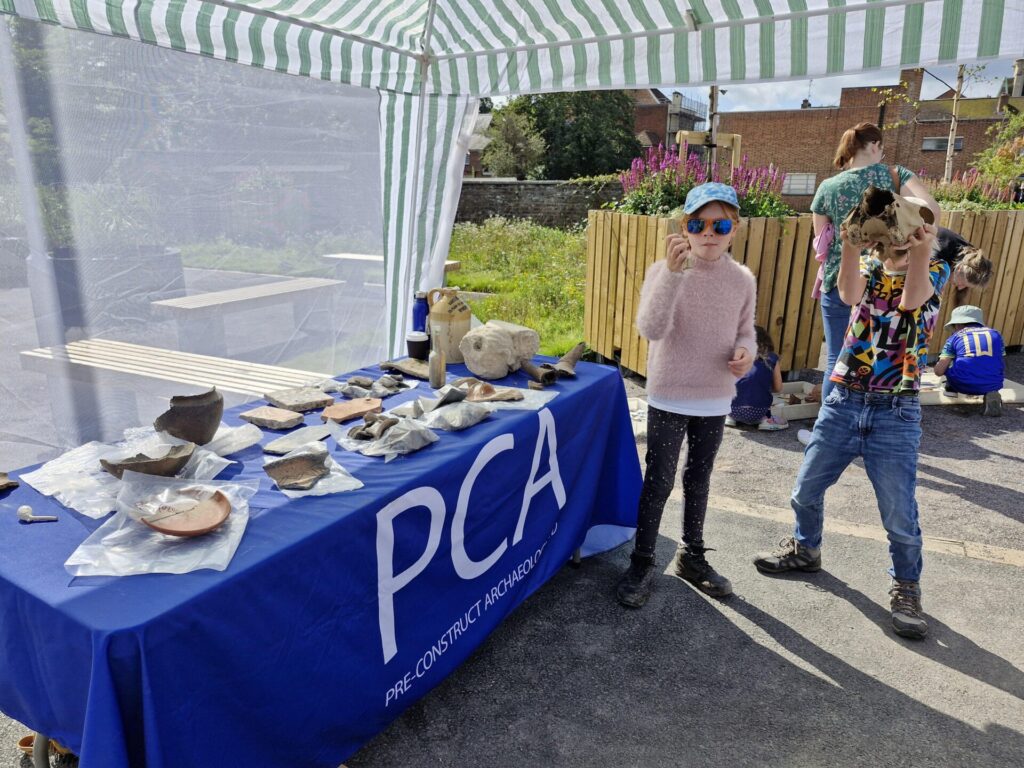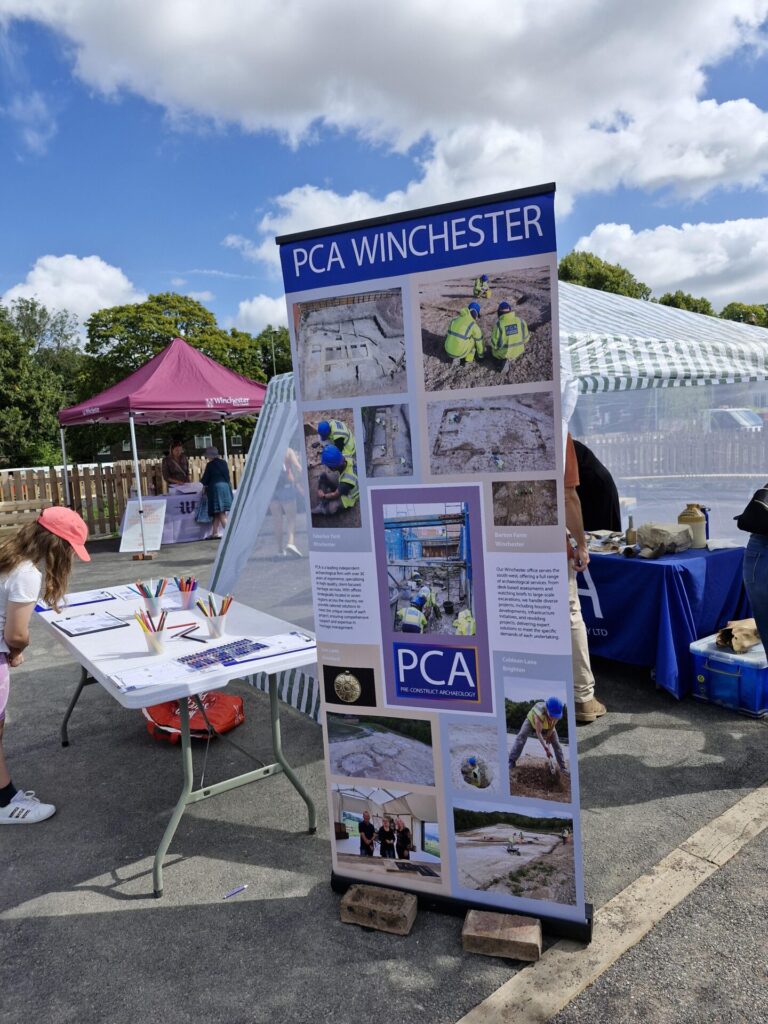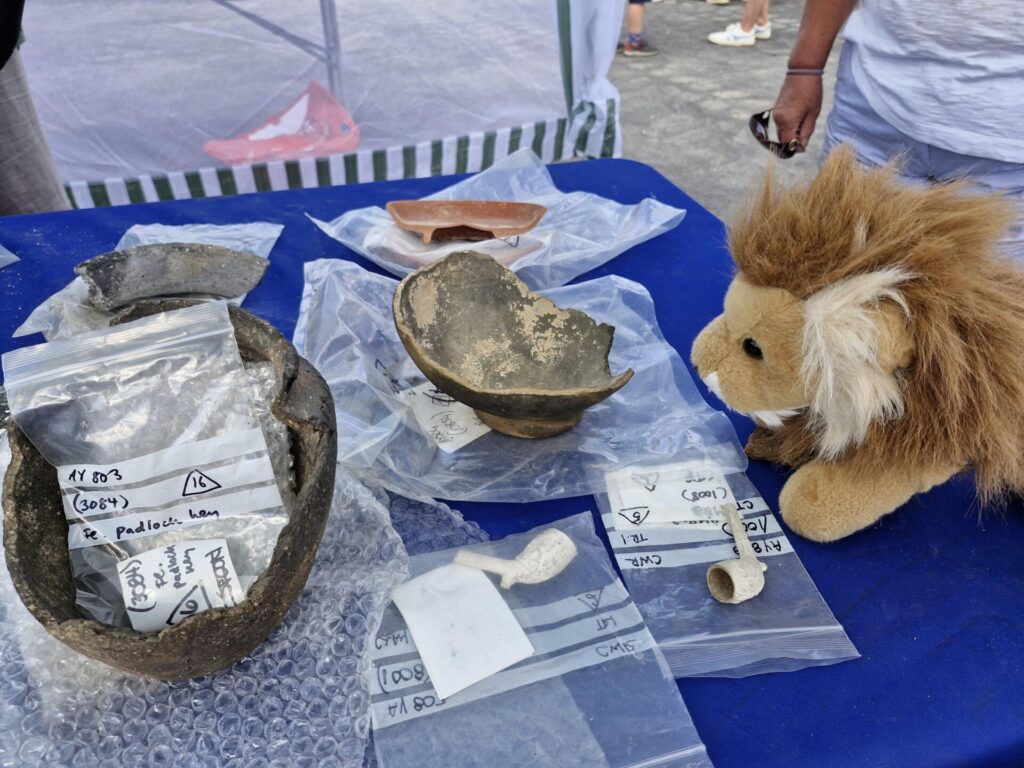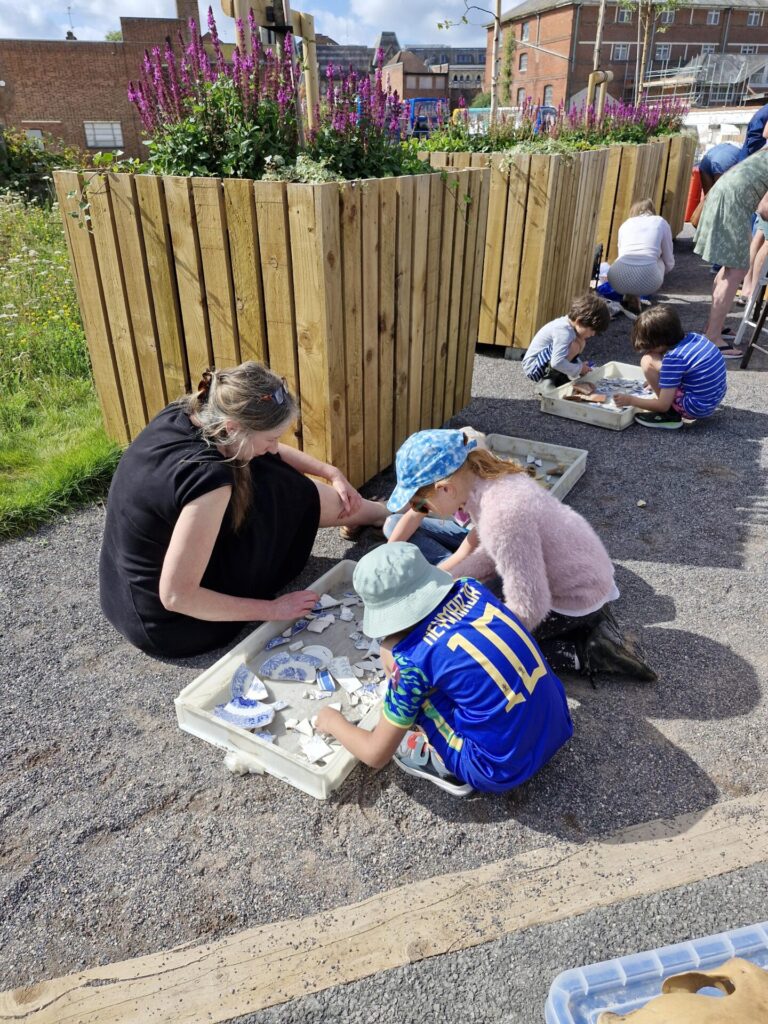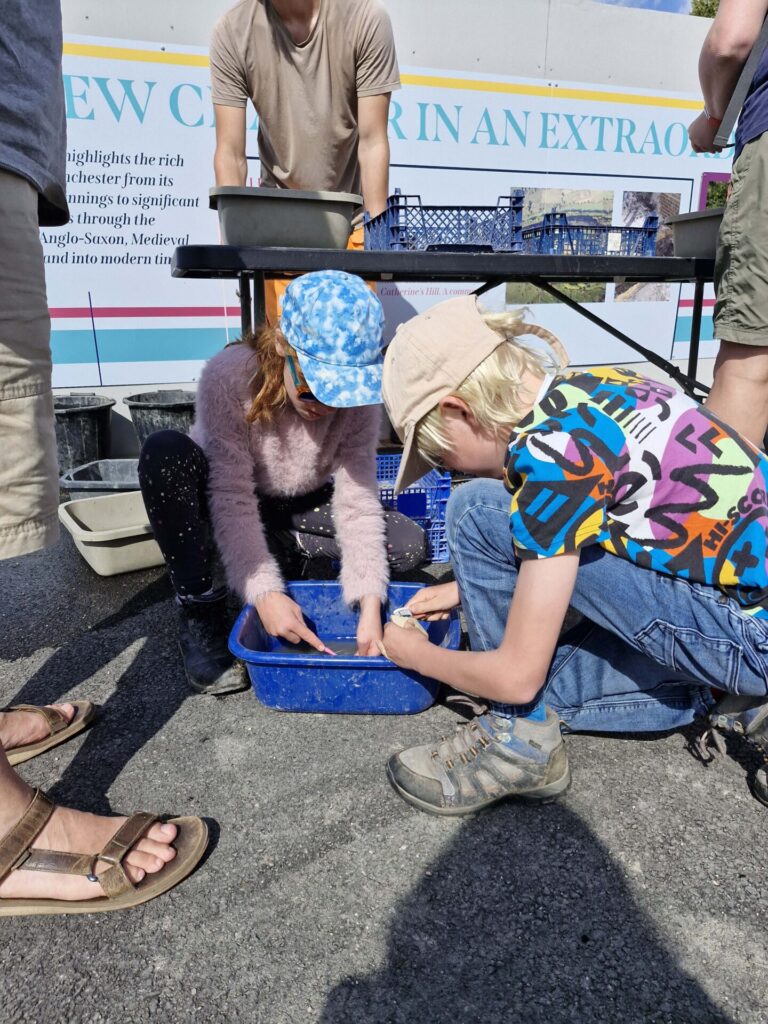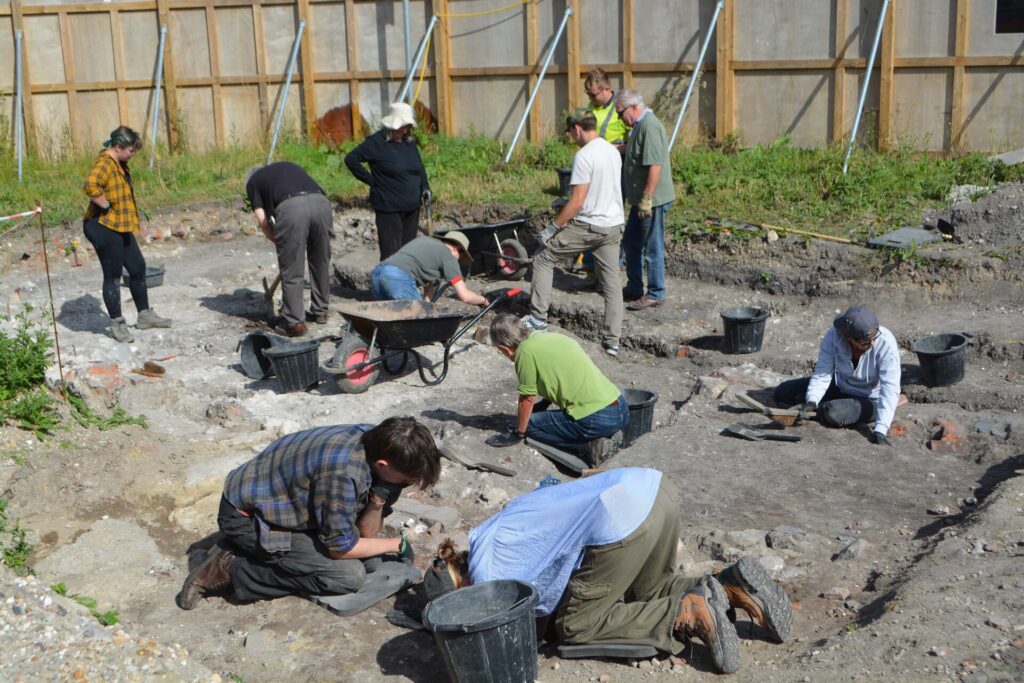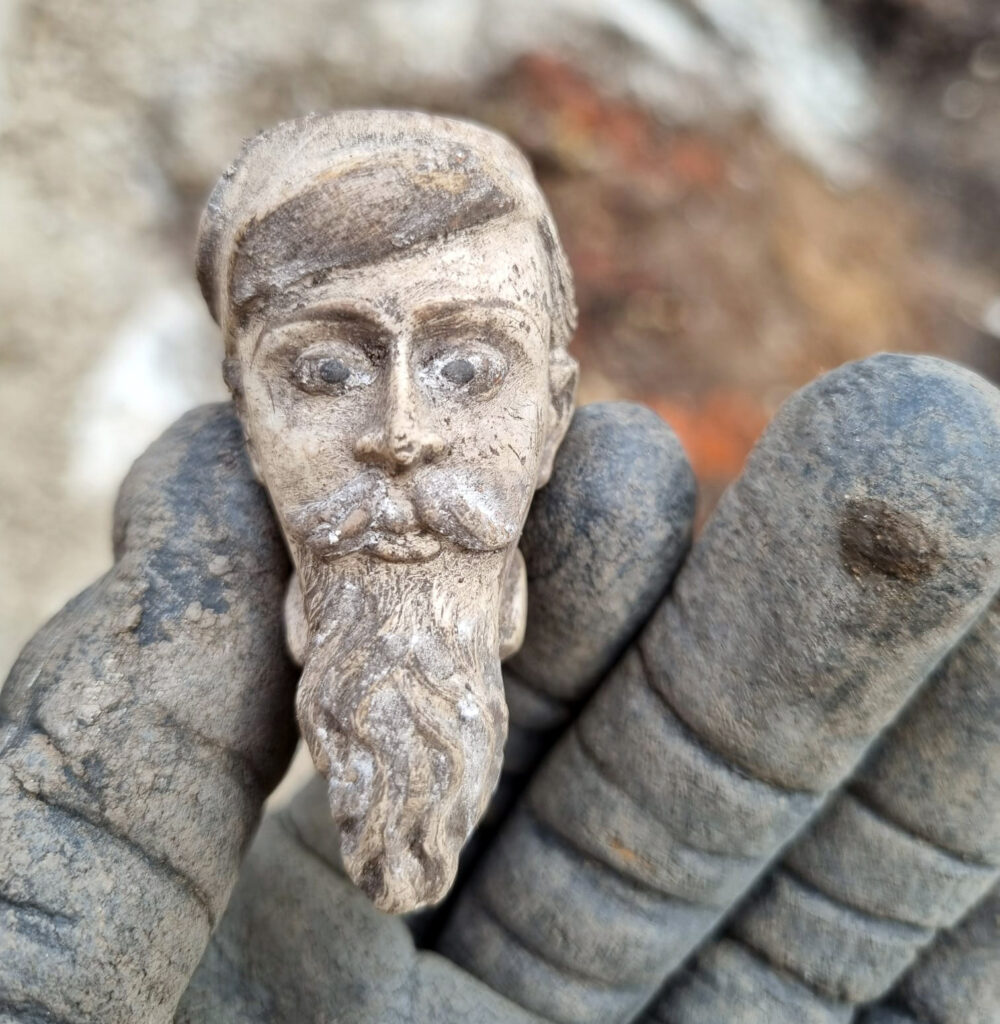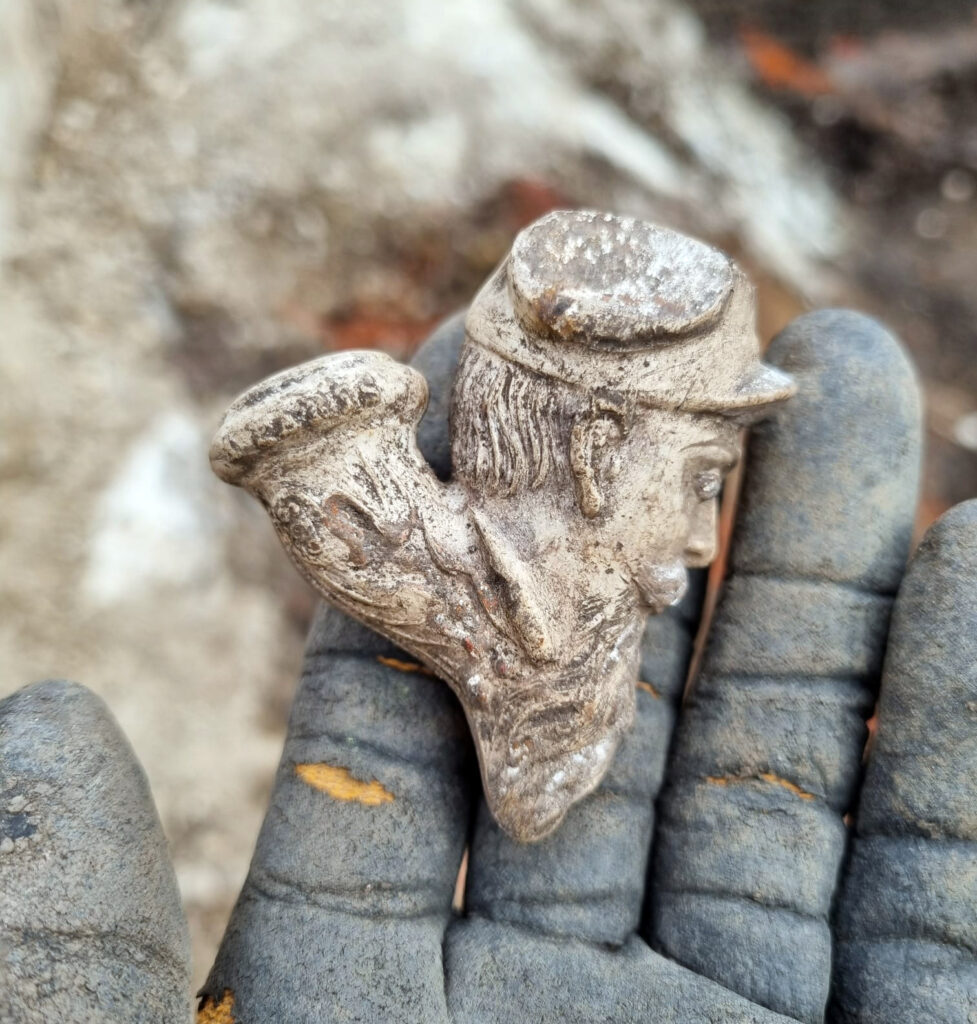Over the summer, PCA has been working alongside the local community at Friarsgate Park in Winchester, the newly-opened green space next to the bus station. The dig concluded with a successful Family Archaeology Event, where around 100 people joined in the fun.
Attendees, particularly young people, had the opportunity to engage directly with history by discovering, washing, and drawing finds unearthed during the excavation. The event also included creative activities like pottery painting and tile design, inspired by the artefacts found on site. These types of events not only raise awareness about local heritage but also help foster an appreciation for archaeology.
This event marked the culmination of a six-week dig, which saw more than 120 community volunteers help uncover Winchester’s hidden history. Friarsgate Park, now fully developed, offers a welcoming space complete with seating, wildflower landscaping, and improved views of the River Itchen. It forms part of Central Winchester Regeneration, a broader effort to breathe new life into under-utilised areas while longer-term plans for the site are still being developed.
While some had called for a full-scale archaeological excavation akin to the one conducted before the construction of the Brooks Centre in the late 1980s, the city council decided on a more targeted approach. This strategy focused on key areas of interest, including the corner of Friarsgate and the bus station entrance, balancing the need for archaeological investigation with time and cost considerations.
The event was covered by the Hampshire Chronicle (click to read the article)





